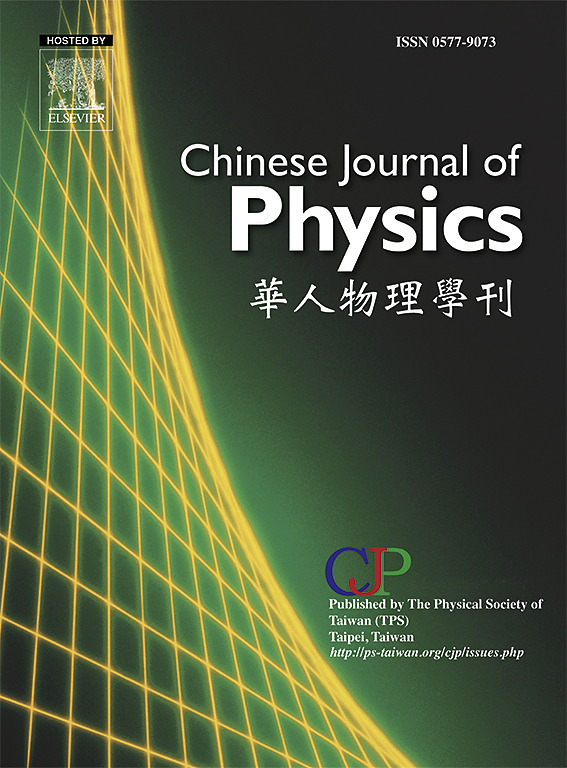Impact of f(ℜ) functions on the dynamical evolution of axially symmetric collapsing stars
IF 4.6
2区 物理与天体物理
Q1 PHYSICS, MULTIDISCIPLINARY
引用次数: 0
Abstract
The study explores the framework of gravity and the dynamical instability of an axially symmetric collapsing star with anisotropic matter distribution by employing a specific equation of state that links the static and non-static components of physical quantities through the adiabatic index. In this modified gravity theory, the Lagrangian density depends on the Ricci scalar (). We utilize radial perturbation techniques to analyze small variations in the geometric and material properties of the collapsing structure. The unstable regions are investigated using Newtonian and post-Newtonian approximations, with the collapse equation highlighting the critical role of the adiabatic index in identifying unstable phases of constrained, nonstatic, axially symmetric stars. Inequalities for the adiabatic index are derived for the Starobinsky model and logarithmic form of gravity. In contrast, this modification introduces additional curvature terms that significantly affect the dynamics of considered compact formations. The findings indicate hydrostatic equilibrium is achieved through a balance among gravitational, anti-gravitational, and effective pressure forces, while an imbalance triggers instability. Furthermore, dark source terms arising due to considered modified gravity contribute to the unstable behavior of the structure during its evolution, influenced by the choice of specific functions.
f(1)函数对轴对称坍缩恒星动力学演化的影响
本研究利用一个特定的状态方程,通过绝热指数将物理量的静态和非静态分量联系起来,探讨了具有各向异性物质分布的轴对称坍缩星的f(1)重力框架和动力学不稳定性。在这个修正的引力理论中,拉格朗日密度依赖于里奇标量。我们利用径向摄动技术来分析坍塌结构的几何和材料特性的微小变化。使用牛顿和后牛顿近似研究了不稳定区域,坍缩方程突出了绝热指数在识别受约束、非静态、轴对称恒星的不稳定相位中的关键作用。导出了Starobinsky模型的绝热指数不等式和f(1)重力的对数形式。相反,这种修正引入了额外的曲率项,显著影响致密地层的动力学。研究结果表明,流体静力平衡是通过重力、反重力和有效压力之间的平衡来实现的,而不平衡会引发不稳定。此外,由于考虑的修正重力而产生的暗源项在其演化过程中导致结构的不稳定行为,并受到特定f(ux)函数选择的影响。
本文章由计算机程序翻译,如有差异,请以英文原文为准。
求助全文
约1分钟内获得全文
求助全文
来源期刊

Chinese Journal of Physics
物理-物理:综合
CiteScore
8.50
自引率
10.00%
发文量
361
审稿时长
44 days
期刊介绍:
The Chinese Journal of Physics publishes important advances in various branches in physics, including statistical and biophysical physics, condensed matter physics, atomic/molecular physics, optics, particle physics and nuclear physics.
The editors welcome manuscripts on:
-General Physics: Statistical and Quantum Mechanics, etc.-
Gravitation and Astrophysics-
Elementary Particles and Fields-
Nuclear Physics-
Atomic, Molecular, and Optical Physics-
Quantum Information and Quantum Computation-
Fluid Dynamics, Nonlinear Dynamics, Chaos, and Complex Networks-
Plasma and Beam Physics-
Condensed Matter: Structure, etc.-
Condensed Matter: Electronic Properties, etc.-
Polymer, Soft Matter, Biological, and Interdisciplinary Physics.
CJP publishes regular research papers, feature articles and review papers.
 求助内容:
求助内容: 应助结果提醒方式:
应助结果提醒方式:


